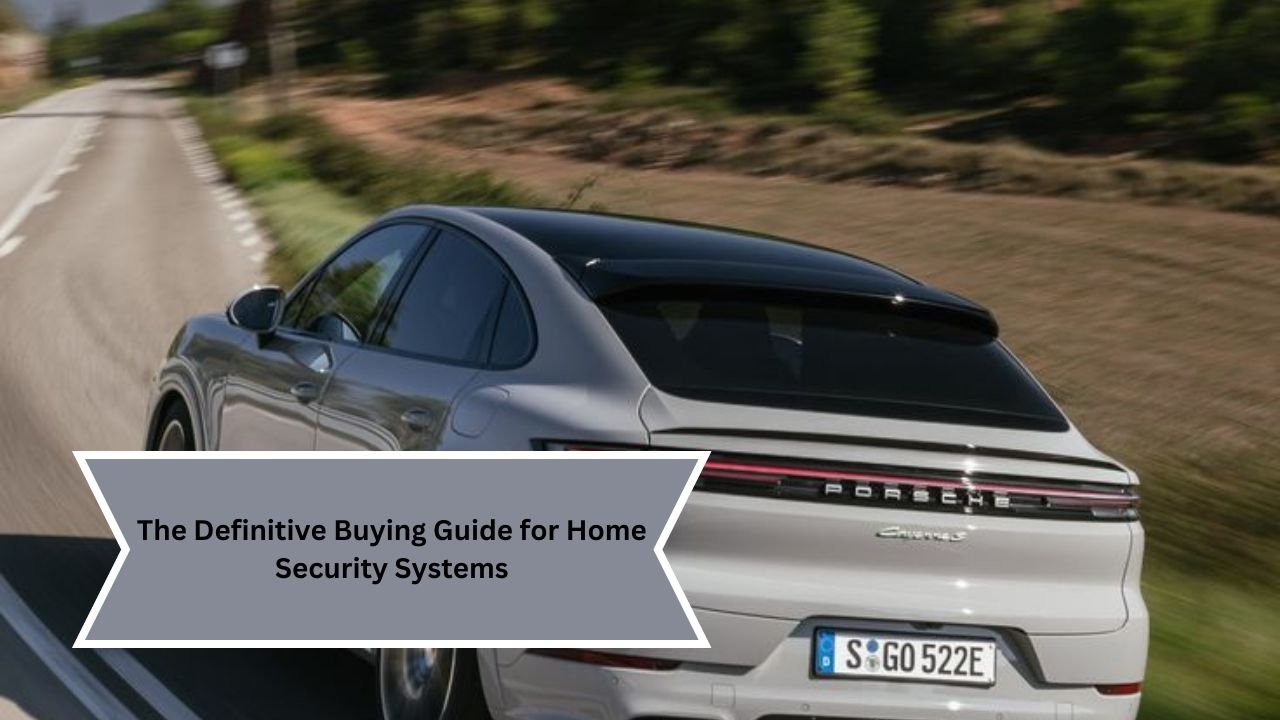In an age where home safety is a top priority, choosing the right home security system can be daunting. With a plethora of options available—ranging from DIY solutions to professionally monitored systems—it’s essential to understand what suits your specific needs. This definitive buying guide will walk you through the key considerations, types of systems, and features to look for when investing in a home security system.
Understanding Your Security Needs
Before diving into the various types of home security systems, take a moment to assess your specific security needs. Consider factors such as:
- Location: Is your home in a high-crime area? Are there any local crime trends you should be aware of?
- Size of Your Home: The number of rooms and entrances can influence the type of system you need.
- Lifestyle: Do you travel frequently? Do you have pets that might trigger motion sensors?
- Budget: How much are you willing to spend on equipment and monitoring services?
Understanding these factors will help you narrow down your options and make an informed decision.
Types of Home Security Systems
- Wired Security Systems:
These systems are hardwired into your home and often provide a reliable connection. While they can be more secure from tampering, installation can be invasive and costly, requiring professional help. - Wireless Security Systems:
Wireless systems are easier to install and can be managed via smartphone apps. They are also more flexible for future expansion but may be susceptible to interference. - DIY Systems:
Many homeowners opt for DIY security systems that they can install themselves. These often come with user-friendly interfaces and are typically more cost-effective, but you’ll need to ensure you can handle the setup and maintenance. - Professionally Monitored Systems:
With these systems, a security company monitors your home 24/7. They can quickly dispatch authorities in case of an emergency, but this often comes with a monthly fee. - Smart Home Integration:
Many modern security systems can integrate with smart home devices. This includes everything from smart locks and lights to voice assistants like Amazon Alexa or Google Assistant.
Key Features to Consider
1. Monitoring Options
- Self-Monitoring: You receive alerts and notifications directly through your phone, allowing you to respond as needed.
- Professional Monitoring: A security company monitors your system for you. This typically comes with a monthly fee but provides peace of mind, especially when you’re away.
2. Video Surveillance
Look for systems that offer:
- Indoor and Outdoor Cameras: Ensure you have comprehensive coverage of your property.
- Night Vision: This feature allows cameras to capture clear footage in low light.
- Two-Way Audio: Communicate with visitors or deter intruders through built-in speakers and microphones.
3. Motion Detection
Choose systems with reliable motion sensors that can distinguish between pets and humans to minimize false alarms. Adjustable sensitivity settings can also help tailor the system to your environment.
4. Alarm Systems
A loud alarm can deter potential intruders. Look for systems with customizable alarm settings, allowing you to choose different tones or durations.
5. Home Automation Features
Consider systems that integrate with smart home devices, enabling you to control lights, locks, and even thermostats. Automation can add an extra layer of security by allowing you to simulate occupancy when you’re away.
6. Mobile App Access
A user-friendly mobile app lets you monitor your home in real time, view camera feeds, receive alerts, and control your system remotely. Ensure the app is compatible with your smartphone.
7. User-Friendliness
The system should be easy to set up and operate. Complicated systems can lead to frustration and decreased usage, undermining your security efforts.
8. Warranty and Customer Support
Check for warranties that cover equipment and services. Good customer support is essential for troubleshooting and ensuring your system functions effectively over time.
Budgeting for Your Security System
When budgeting for a home security system, consider the following:
- Initial Costs: This includes the cost of equipment and installation. DIY systems typically have lower upfront costs.
- Monthly Fees: If you opt for professional monitoring, factor in monthly subscription fees.
- Additional Equipment: You may want to invest in extra cameras, sensors, or smart devices over time.
A comprehensive budget will help you understand the total cost of ownership for your security system.
Research and Reviews
Before making a purchase, take time to research different brands and models. Online reviews, consumer reports, and user testimonials can provide insights into the reliability and effectiveness of specific systems. Websites like Consumer Reports or tech blogs can offer in-depth comparisons and evaluations.
Installation Considerations
Decide whether you want to install the system yourself or hire a professional. DIY systems usually come with clear instructions and require minimal tools, while wired systems may necessitate professional installation for optimal placement and function.
Final Thoughts
Choosing the right home security system is a crucial decision that requires careful consideration. By assessing your specific needs, understanding the different types of systems available, and evaluating key features, you can make an informed choice that enhances the safety of your home.
Ultimately, the best security system is one that fits your lifestyle, budget, and provides peace of mind. Take your time in this decision-making process, as investing in the right home security system can protect your home and loved ones for years to come. Whether you choose a sophisticated smart system or a straightforward DIY solution, ensuring your home is secure is an investment worth making.
| HOME | CLICK HERE |
| BUYING GUIDES | CLICK HERE |

